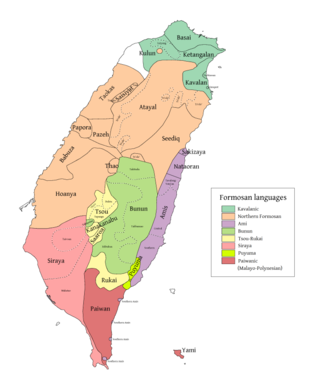Top Qs
Timeline
Chat
Perspective
Sakizaya language
East Formosan language of eastern Taiwan From Wikipedia, the free encyclopedia
Remove ads
Sakizaya is a Formosan language[2] closely related to Amis. One of the large family of Austronesian languages, it is spoken by the Sakizaya people, who are concentrated on the eastern Pacific coast of Taiwan. Since 2007 they have been recognized by the Taiwan government as one of the sixteen distinct indigenous groups on the island.
Remove ads
History
After the Takobowan incident of 1878, the Sakizaya people hid among the Nataoran Amis. Scholars thus mistakenly categorised the Sakizaya language as a dialect of Amis.
In 2002, the Center of Aboriginal Studies of National Chengchi University in Taiwan corrected this error when they edited the indigenous language textbooks. That year, the Sakizaya language was designated both as a Chilai and Amis sublanguage. Both are included in the family of Austronesian languages.[3] On 17 January 2007, the Sakizaya community became the thirteenth distinct indigenous ethnic group recognised by the Taiwanese government.[4]
A total of 985 people are registered as Sakizaya.[5] They live primarily in the Takubuwan, Sakur, Maifor and Kaluluwan communities. Thousands of other Sakizaya are still registered as Amis, based on historic classifications. Around half of Amis politicians in Hualien City, the biggest city in the Amis area, are said to be ethnic Sakizaya.[citation needed]
Remove ads
Phonology
Consonants
- /ɡ/ may also occur, but is rare.
- Sounds /ʡ/ and /h/ may also be heard as [x] and [ʔ] in free variation.
- /ts, s, z/ are palatalized as [tɕ, ɕ, ʑ] when preceding front sounds /i, j/.
- /b/ may also be heard interchangeably as [f] among speakers.
- /l/ may also be heard as [r] when in word-final position. /d/ may also be heard as [r] in intervocalic position.[6]
Vowels
Remove ads
See also
References
Bibliography
External links
Wikiwand - on
Seamless Wikipedia browsing. On steroids.
Remove ads


